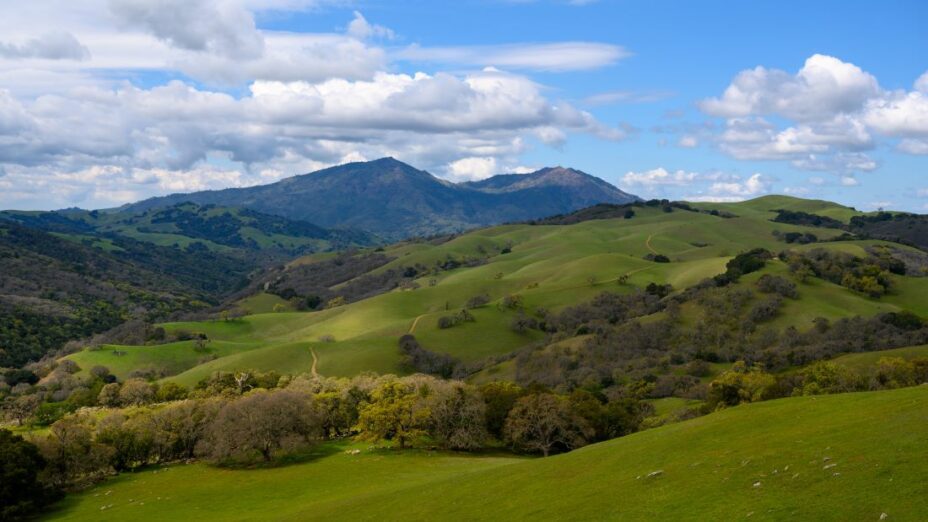
Winter Is a Great Time for a Road Ride on Mount Diablo
Riding a bicycle up to the summit of Mount Diablo is an unforgettable experience. And during the winter months when the soil is muddy and the trails are more susceptible to erosion, it is a great time to hit the road!
As one of the Bay Area’s three iconic hill climbs, Mount Diablo rewards you with incredible vistas along the way and stunning views when you reach the top of the mountain.
On a clear day, you can see for up to 200 miles in all directions, and the snowcapped Sierra Nevada is easily spotted.
The Farallon Islands can be seen when it’s not hazy or after a winter storm, and on exceptionally clear days, you can see Mount Saint Helena and even Lassen Peak.

The view from the Mount Diablo summit looking toward Mount Olympia. Photo by Seth Adams
Beloved by serious cyclists throughout the Bay Area and beyond, Mount Diablo is a must-do ride. And it even hosted a stage during the Tour of California bicycle race in 2014, when thousands of spectators lined the road to cheer on the competitors creating scenes reminiscent of the Tour de France.
There are not many other rides nearby that give you the sense that you are truly climbing a mountain.
South Side or North Side
Cyclists have two options to reach the junction—which is just past the halfway point up the mountain—and both present distinct levels of difficulty.
The easier option is the South Gate route, accessible from Danville, which is more gradual and is the more popular point of access for cyclists.
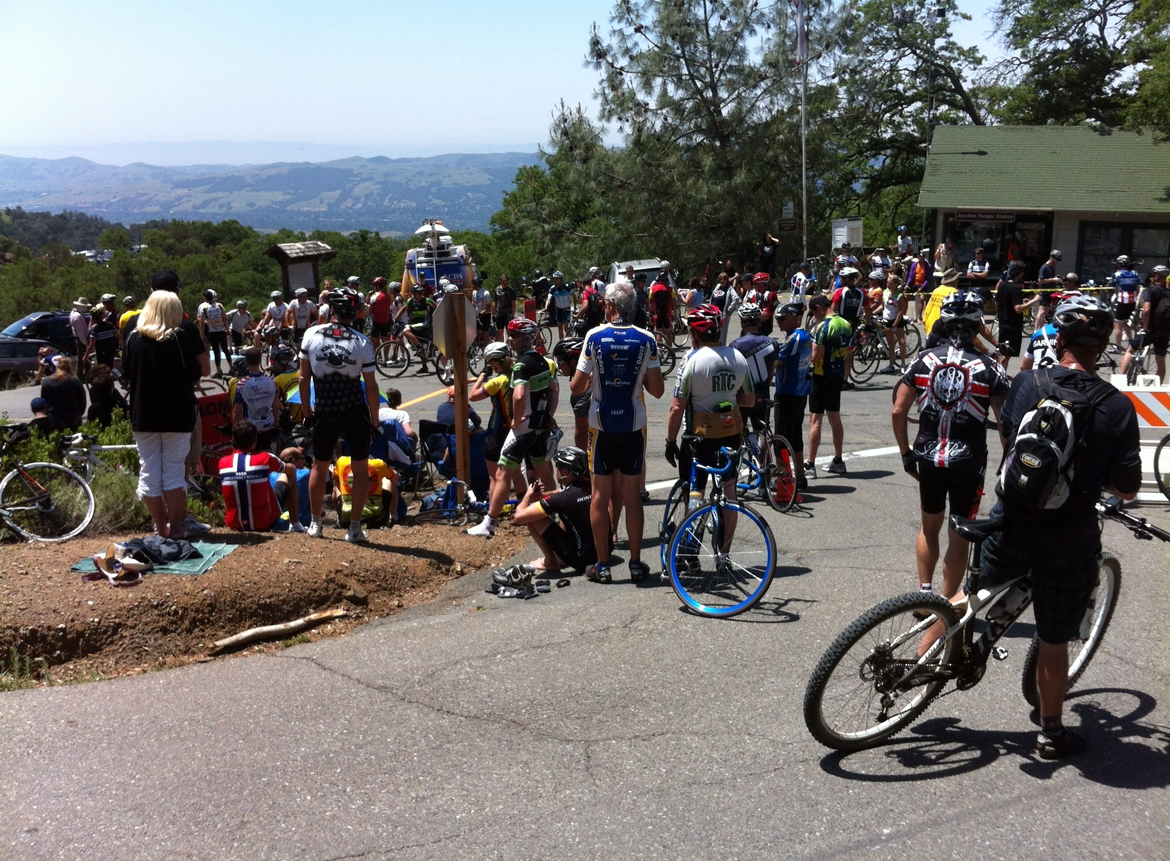
Cyclists gather at the Junction Ranger Station on Mount Diablo. Photo by Mel Bearns
The North Gate route from Walnut Creek starts out easily, but quickly ramps up and becomes steeper once you get close to Burma Road, and doesn’t let up though the switchbacks.
It levels off a little bit before you reach the ranger station at the junction at 2,200 feet above sea level.
The junction is a popular place to regroup, refill water bottles, and fuel up before taking on the Summit Road to the top of Mount Diablo.
From the junction, the climb is decidedly better suited to more advanced riders, as it resumes in earnest and continues at an average grade of 7 to 9 percent. And even though it is relatively short at 5.6 miles, the elevation gain can make it feel much longer.
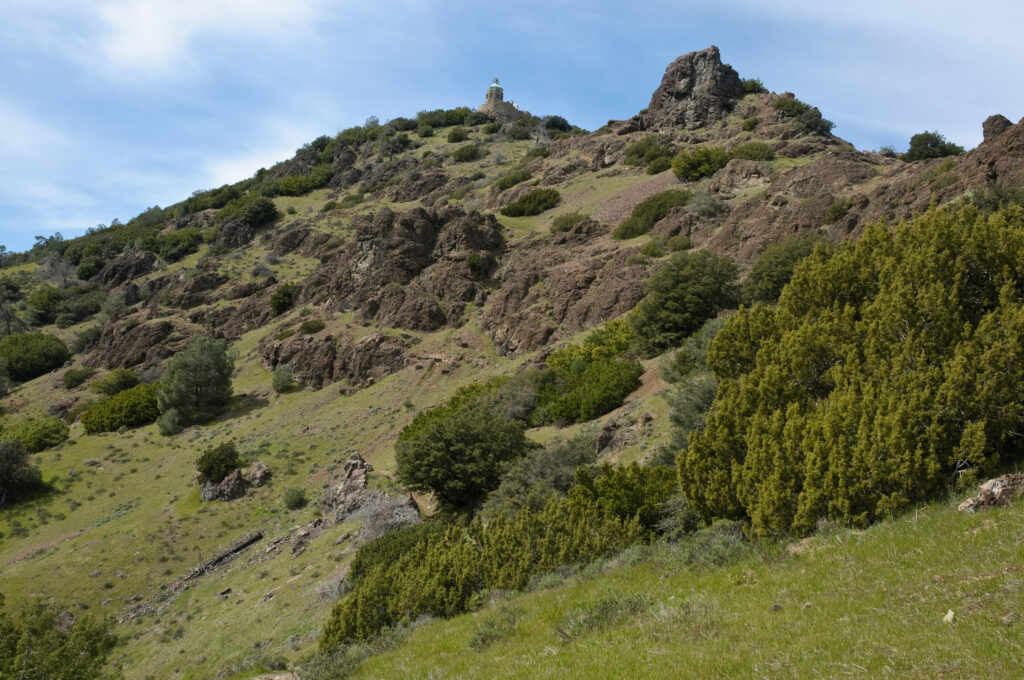
The Mount Diablo Summit Museum and Devils’ Pulpit from the Devil’s Elbow Trail. Photo by Scott Hein.
Once you pass the Devil’s Elbow switchback, you get a brief respite until you ride past the large parking lot below the summit and get ready to face the last climb.
You Are Almost There!
With a formidable lung-busting grade of 13 percent, the last stretch before you top out at 3,849 feet is the most difficult part of the climb by far, but fortunately it is only 656 feet long!
Once you crest the top, there’s nothing else left to do but catch your breath, have a drink and a snack, and relax while you enjoy the spectacular views from the summit.
Now comes the fun part—descending! Before you head back down, make sure to layer up, because your body will quickly cool down. Be on the lookout for wildlife, gravel, and foreign objects on the road, and take time to enjoy the scenery and savor the reward of your effort.
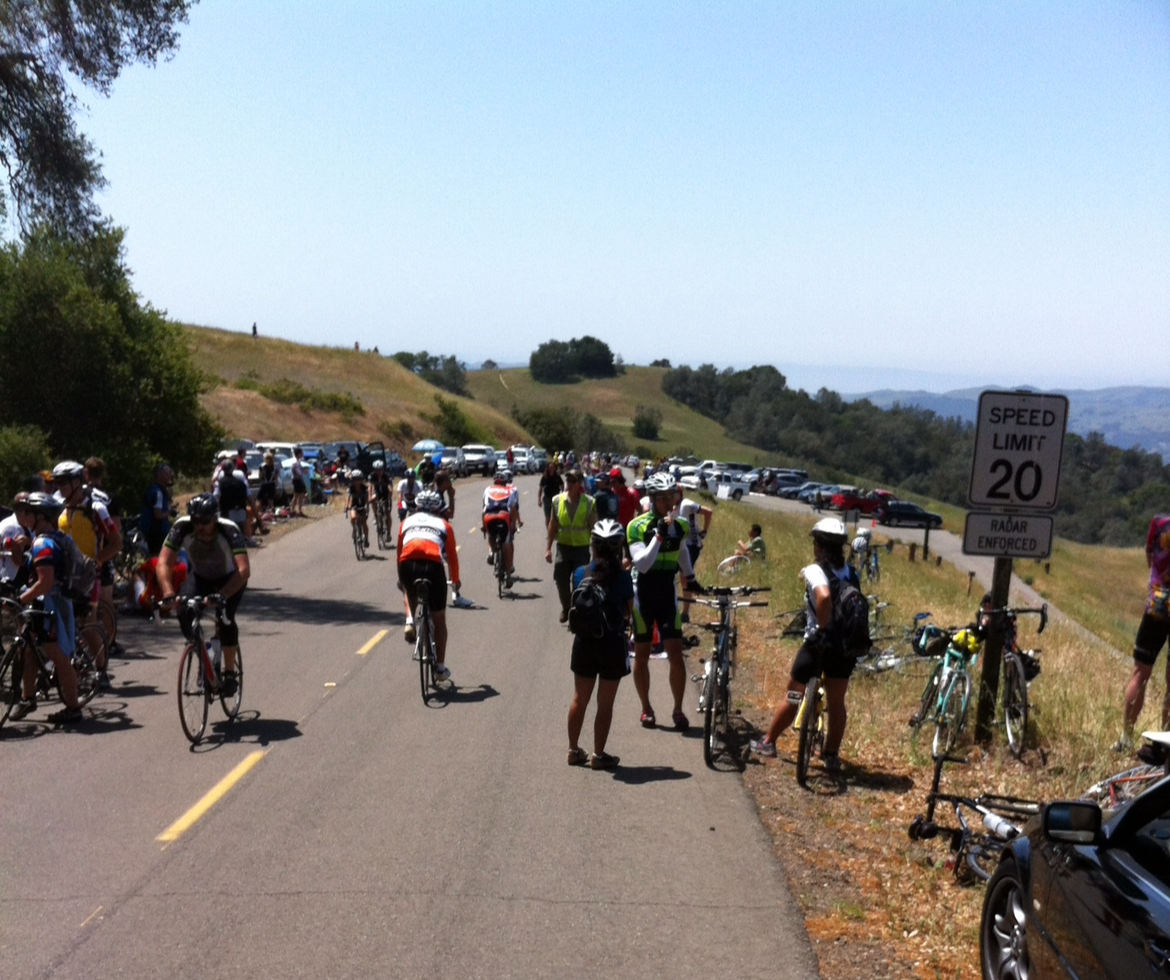
Cyclists gather at Barbecue Terrace on Mount Diablo during the Tour of California. Photo by Mel Bearns
Pro Tips
- Before you go, make sure your bicycle is in top shape—check your tire pressure, lube your chain, and make sure you have a spare tube and patch kit as well as a pump and tire irons.
- The earlier you go, the less traffic there will be—especially on weekends, when vehicular traffic up and down the mountain picks up. Respect the laws of the road and ride on the right side of the road to allow safe passing.
- The right gear can make the experience much more pleasant because weather and temperatures can be mild at the base, and windy, foggy and damp at the top in the winter. Layering is essential when descending; your body temperature will plummet quickly.
- Stay hydrated and fueled up. Even though you are riding when it’s not hot, keep your fluid intake up to avoid cramping. Bring easily packed snacks like energy bars or gels—you will be burning a lot of calories. Your body will recover more quickly if you don’t let your “tank” hit empty.
- With the addition of 48 bicycle turnouts to enable safe passing by vehicles on the road, Mount Diablo has become a much safer and enjoyable destination.
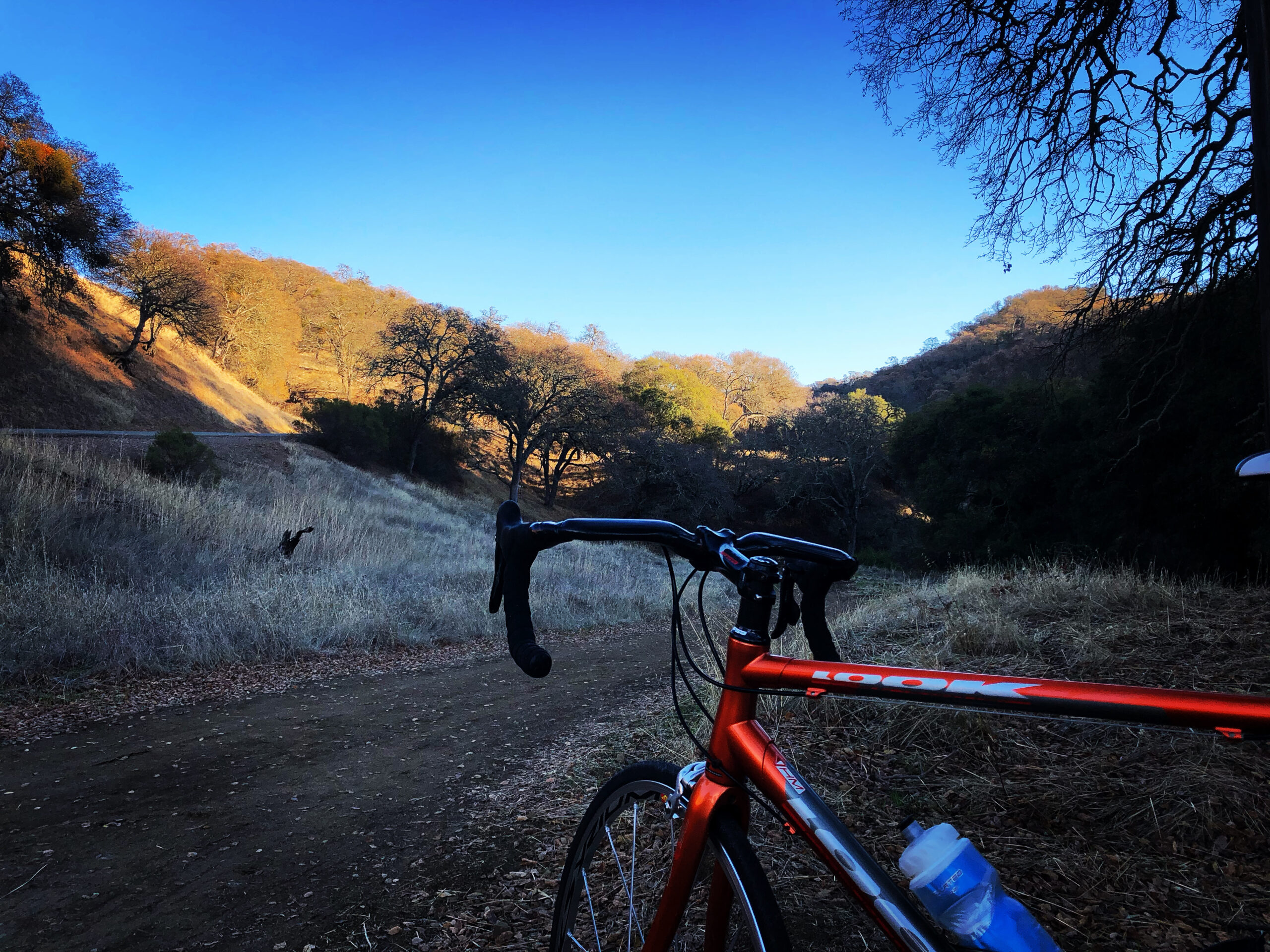
It’s a long way to the top of the mountain by bike from North Gate. Photo by Mel Bearns

